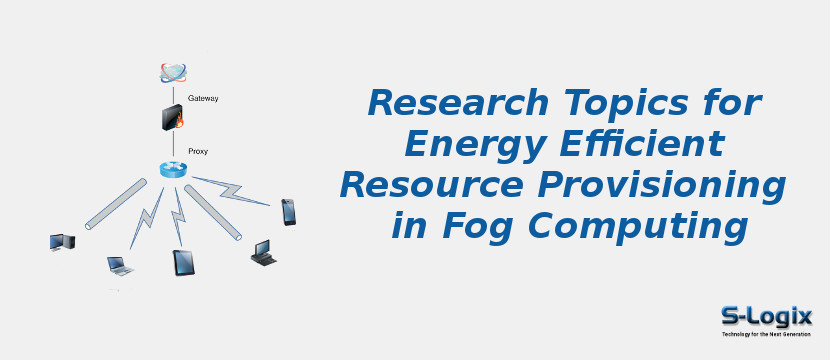Energy-efficient resource provisioning in fog computing infers the practice of allocating and managing computing resources to reduce energy consumption while meeting the demand for computing services.
It is achieved by making smart decisions about where to run different applications and tasks, considering factors such as network latency, data processing requirements, and energy consumption of the different devices in the network.
By reducing energy waste and optimizing resource utilization, fog computing can help extend edge devices battery life and reduce the carbon footprint of large-scale computing systems. For energy-efficient resource allocation, service level flexibility and resource availability requirements monitor:
• Importance of resource allocation: Resource allocation is a standardized approach of allocating available resources to required cloud clients over the Internet. Resources should be optimally allocated to applications running in a virtualized cloud environment in terms of time and order. Server Virtualization Delivers User Satisfaction and Resource Utilization in High-Performance.
Primary complexity in resource allocation of fog computing includes :
• Resource administration.
• Scalability.
• Energy efficiency.
• Job scheduling.
• Load distribution.
• Network Latency: The proximity of devices to the data source and the end user can impact the energy required to transmit and process data. Tasks that require low latency may be best run on edge devices closer to the data source.
• Data Processing Requirements: Different applications have varying computational and storage needs, and the energy required to run these applications can vary widely. The fog computing infrastructure should be designed to match the processing requirements of each application with the most appropriate devices.
• Energy consumption of devices: The energy consumption of different devices in the network should be considered when deciding where to run applications. Devices with lower power consumption can be used for tasks that are not computationally intensive, while more powerful devices can be reserved for demanding applications.
• Resource Utilization: Efficient resource utilization is key to reducing energy consumption in fog computing. Load balancing and dynamic resource allocation techniques can be used to ensure that computing resources are used optimally without wasting energy on idle devices.
• Network Traffic: Network traffic patterns can significantly impact energy consumption, particularly in large-scale fog computing environments. Techniques such as traffic management and data compression can reduce energy consumption by reducing the data transmitted over the network.
• Heterogeneous Devices: The large variety of edge devices used in fog computing, each with different capabilities and energy consumption patterns, can make it difficult to make optimal resource allocation decisions.
• Complex Resource Allocation: Determining the optimal allocation of computing resources to meet the needs of different applications and services can be a complex task, particularly in large-scale fog computing environments.
• Interference with other Systems: The allocation of resources for energy efficiency purposes can sometimes conflict with other system goals, such as maximizing performance or ensuring security.
• Balancing Energy Efficiency and Performance: Finding the right balance between energy efficiency and performance can be challenging, as reducing energy consumption may come at the cost of slower processing times or lower quality of service.
• Lack of Tools and Techniques: There is currently a lack of tools and techniques to help manage and optimize resource allocation in fog computing environments, making achieving energy efficiency at scale difficult.
• Advanced Resource Allocation Techniques: Research into new resource allocation algorithms and techniques that can effectively balance energy efficiency and performance in large-scale fog computing environments.
• Energy-Aware Applications: The design and development of energy-aware applications that can dynamically adjust their resource requirements based on the current state of the network and available resources.
• Energy-Efficient Networking: Research into energy-efficient networking technologies, such as low-power protocols and energy-aware data transmission techniques, to reduce energy consumption in fog computing networks.
• Improved Management and Monitoring Tools: Developing new management and monitoring tools can provide a real-time network view and help system administrators make informed resource allocation decisions.
• Resource provisioning in fog computing through deep reinforcement learning
• Towards end-to-end resource provisioning in fog computing over low power wide area networks
• Energy-efficient resource scheduling in fog computing using SDN framework
• Towards cost-efficient resource provisioning with multiple mobile users in fog computing
• MIST: Fog-based data analytics scheme with cost-efficient resource provisioning for IoT crowdsensing applications
